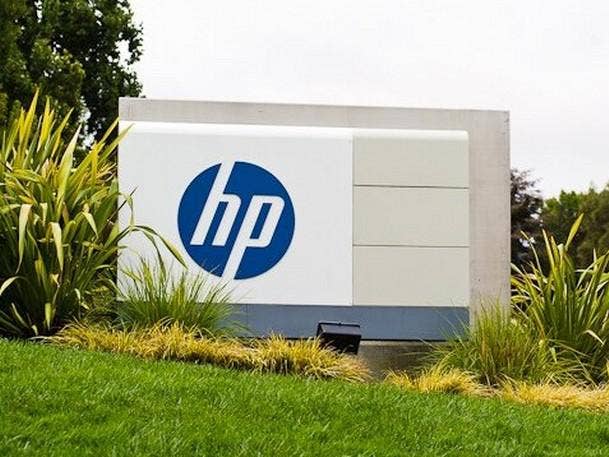5 Things To Know About HP's Latest Investments In Diversity And Sustainability
HP reveals progress in its initiatives around sustainable impact and diversity and inclusion, while also setting new goals for progress going forward.

HP Inc. is doubling down on its initiatives around diversity and sustainable impact across its business, the company said Wednesday.
The Palo Alto, Calif.-based PC and printer giant released its 2019 Sustainable Impact Report and its inaugural Human Rights Progress Report, detailing the company's progress in its sustainability and diversity and inclusion initiatives, and revealing several new goals for accelerating the efforts in coming years.
[Related: HP CEO Enrique Lores Sees Permanent Changes, 'Significant Tailwind’ From Coronavirus Crisis]
"Recent events have laid bare the systemic racism and deep inequalities that remain a stain on society, and it’s imperative for all companies to act with urgency on all fronts,” said HP CEO Enrique Lores in a news release. "It’s especially important for companies to hold themselves accountable and publicly report their progress."
What follows are five key takeaways from HP's latest reports on its diversity and inclusion and sustainable impact initiatives.
Hiring From Underrepresented Communities
HP reports that its efforts to hire from underrepresented communities—including women, minorities, veterans and persons with disabilities—saw improvement in 2019. Hiring from underrepresented groups accounted for 63 percent of all hires last year, up from 57 percent the previous year.
Forty percent of new U.S. hires in 2019 were minorities, and 40 percent were women—compared with 32 percent the year before in both cases, HP said. The company also said it surpassed its target for the number of veterans hired by 43 percent.
“This year’s data shows that HP is making significant strides forward in many areas, while also revealing where we must do better," Lores said in the news release. "For example, the number of African-American employees is below where it needs to be, and we are taking actions to improve. While we have a lot of hard work ahead, our values-driven culture that unites our teams and our partners gives me confidence in our ability to accelerate our progress and foster a more sustainable, equitable and just society.”
While HP has been working toward increasing representation for years, "it's not enough progress," said Ellen Jackowski, chief sustainability and social impact officer at HP, in an interview with CRN. "Overall, we need to continue to focus in the space—specifically on hiring of Black and African-American individuals. And we are taking strong actions to improve."
Increasing Representation Among Executives
One of the new goals announced by HP is a commitment to double the number of Black and African-American individuals who are serving as executives at the company by 2025.
"Our belief is diversity breeds innovation. The more diverse mindsets we have around the table, the better products we make," Jackowski said. "We've seen that over time at HP, and we increasingly see that as we lean in further in this space."
In addition, the HP Foundation has committed to donate $500,000 to social justice organizations while also matching 200 percent of employee donations, the company said.
Reducing Single-Use Plastic Packaging
In terms of HP's sustainable impact initiatives, the company is unveiling a new goal: to eliminate 75 percent of the single-use plastic packaging that comes with its products by 2025.
The focus of the effort is around switching to molded fiber packaging cushions instead of foam cushions, Jackowski said. Molded fiber is made from a more sustainable resource, paper fibers, and is also recyclable, she said.
"You're going to continue to see us make big shifts in our packaging like that to reach that aggressive goal," Jackowski said.
Increasing Recycled Plastic
HP is continuing to work toward its goal of reaching 30 percent of post-consumer recycled content plastics in its print and personal systems by 2025—achieving 9 percent recycled plastics last year, up from 7 percent the previous year.
The aim is to use a significant amount of ocean-bound plastic in the effort to reach the goal, Jackowski said, providing the added benefit of reducing the accumulation of plastics in the oceans.
For instance, HP has been sourcing ocean-bound plastic from Haiti since 2016, and is investing $2 million to build a washing line in the country that will remove contaminants to increase the quality of the plastics, Jackowski said. The washing line was intended to have been built by this point, but is delayed as a result of the COVID-19 pandemic, she said.
"We couldn't fly the implementation team down there to build it. So we're now looking into new ways to build it remotely using video cameras and virtual technology," Jackowski said.
To date, HP has sourced 1.7 million pounds of ocean-bound plastics, equaling more than 60 million plastic bottles, the company said.
Impact On Sales
The sustainable impact initiatives at HP were a differentiator in helping the company win $1.63 billion worth of new revenue opportunities in 2019, HP reported. That was up 69 percent from $972 million in 2018.
In those deals, sustainability criteria were a "known consideration" for the customers involved, HP said.
"Efforts to make a sustainable impact on people, the planet and communities are integrated into HP’s business strategy and operations, and have become an increasingly important driver of customer purchasing decisions," the company said in its news release.